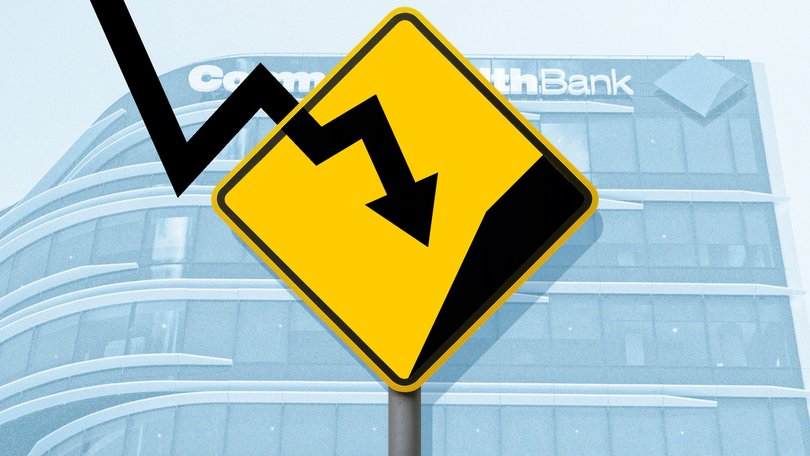From market darling to margin squeeze: CBA’s 2025 reality check

Commonwealth Bank shares have nearly lost all their gains for the year over concerns about sliding profit margins and competitive for home loans.
Shares in Australia’s largest lender have fallen 16 per cent from their record high of $191.40 on June 25 following buying frenzy that drove them up 25 per cent and placed it among the world’s most valuable banks.
On Thursday shares hit $159.68 after four days of heavy selling, putting them up 4 per cent this year compared with a 6.8 per cent increase for the benchmark S&P/ASX 200 Index.
Sign up to The Nightly's newsletters.
Get the first look at the digital newspaper, curated daily stories and breaking headlines delivered to your inbox.
By continuing you agree to our Terms and Privacy Policy.“The reality is for the last two years we’ve all been scratching our heads as to why CBA has been so strong,” said Dr Don Hamson, the managing director of Plato Investment Management. “So, if an expensive bank like that disappoints the market just slightly, it gives investors a reason to trim and that’s the story.”
Flat dividends
Mr Hamson, who oversees around $22.5 billion in Australian investors’ funds across Plato Investments, said the Commonwealth Bank’s September quarter cash profit of $2.6 billion missed expectations by about 1 or 2 per cent.
“The bank’s costs were also probably a bit higher than people were hoping,” he said. “But it’s not like the result was a major disappointment, the reality is when it’s priced for perfection if you disappoint a little bit you’re going to get that sort of [share price] reaction.”
Analysts are calling for the bank to pay dividends of $4.85 per share this financial year to put it on a yield of 3 per cent, which is a long way below historical averages around 5 per cent. The dividend forecasts reflect no growth on last financial year’s dividend of $4.85 a share.
Profit margins slide
Other investors pointed to Chief Executive Matt Comyn revelation that the net interest margin (NIM) slipped in the September quarter.
The NIM is a key measure of a bank’s profitability and reflects how much it makes on what it lends, versus what it pays on what it borrows.
For example, a bank may offer a home loan at 6.08 per cent and borrow from wholesale markets to fund it at 4 per cent, to leave the NIM as the difference at 2.08 per cent.
Over the 12 months to June 30, CBA’s NIM climbed 9 basis points to 2.08 per cent, although over the September quarter Mr Comyn suggested it fell a couple of basis points. Just small changes in the profit margin on more than $700 billion in home loans can produce significant swings on the bank’s future profits.
“Talk of NIM contraction (not specified how much) as well as cost pressures and competitive intensity appear to be driving the negative reaction,” said IG Markets analyst Tony Sycamore. “Furthermore the stock remains expensive on some metrics.”
Broker Citi described the September quarter profit report as generally “in-line” with expectations, but retained its sell rating on the shares and a $130 share price target.
While analysts at UBS also stuck to a sell rating on valuation grounds and pointed to the fact that its potential to return capital to investors in the form of high dividend payments is relatively low versus historical standards.
UBS has a 12-month share price target on the stock of just $125.
Other like, Simon Mawhinney, the chief investment officer of funds management group Allan Gray have repeatedly warned in 2025 that the stock is overvalued.
Last May, Mr Mawhinney declared he “would rather stick pins in his eyes” than buy the shares.
The high-profile investment chief also attributed CBA’s gravity defying rise to the increasing popularity of index-tracking investment products that funnel investors’ money into the largest companies by market capitalisation regardless of their valuations.

